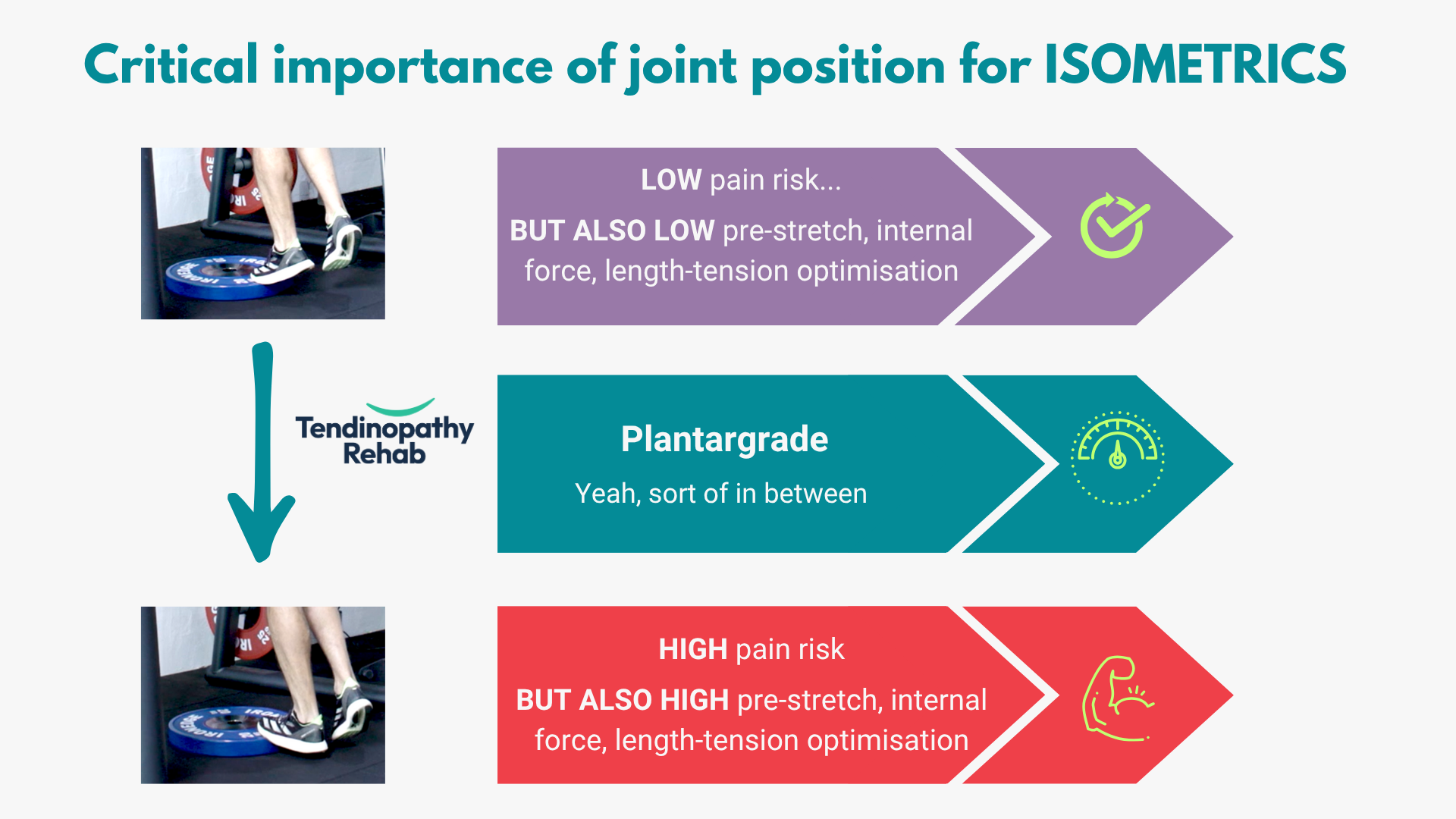What is the best joint position for Achilles tendon isometrics?
Hey folks, excited to announce that my new, super comprehensive, tendinopathy course is going to be launched online soon. Watch this space! Today, I want to talk about something that has hugely changes my practice in the last 2-3 years. The critical important of join position when prescribing isometric exercise for people with tendinopathy.

Isometrics have a long history. They have been used well before they became popular to manage pain or ‘cortical inhibition’. But what is the best joint position to prescribe for isometric rehab? It depends on what the outcome is and also the patient presentation.
Let's take one common reason they are prescribed as an example - to maximise tendon strain which will lead to greater Achilles tendon adaptation. Then we need to consider: 1) the internal forces on the calf-Achilles tendon complex, 2) the pre-stretch on the calf-Achilles muscle tendon unit, and 3) length-tension optimisation within the calf-Achilles complex. Let’s go through them all.
1) Internal calf-Achilles tendon unit forces: The typical position that isometric Achilles tendon loading is done is on some degree of plantarflexion. The reason for this is that it is least provocative. This is great as a start point but we need to progress to more ankle DF – including plantargrade and then eventually some DF. As we go from ankle PF to ankle DF the moment arm of the Achilles tendon becomes smaller. This means that for a given external load the calf and tendon work harder (more tendon strain).
2) Calf-Achilles muscle tendon unit pre-stretch: When we do isometric holds in plantarflexion there is slack in the calf-Achilles muscle-tendon unit. In contrast, as we move into plantargrade and then ankle DF we take up slack in the calf-Achilles muscle tendon unit. This means that the overall tendon strain is greater in more DF compared with PF (and so is the adaptive stimulus).
3) Length-tension optimisation within the calf-Achilles complex: As we go into DF the entire muscle-tendon unit elongates. The tendon takes up a lot of this stretch which leads to more optimal fascicle length for force production. This is why we can generally produce greatest force in some degree of ankle dorsiflexion. Despite the calf-Achilles unit moment arm being at less mechanical advantage (it is smaller) we can produce max joint PF torque in this position because of an optimised length-tension.
Take-home message: If you're using isometric holds in Achilles rehab to drive adaptation, don't stay in plantarflexion too long. Progress toward dorsiflexion — it increases tendon strain through higher internal force, reduced slack, and improved force production. In my tendinopathy course, I discuss how these and other factors can be considered and applied in rehab for all common lower limb tendon sites (not all sites are the same) and how we shift to more aggressive ISOM positions and exercises during rehab.

Connect with Prof Peter & the Team
Book a consultation
-
Visit Peter at our Richmond Clinic
-
Via a Telehealth session
-
132 Bridge Road, Richmond 3121, Melbourne Australia
